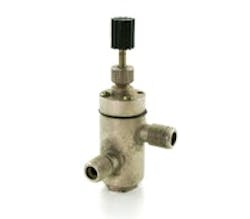Properly Position Interlock Valves
Plants continue to expand use of active safety systems. Interlocks often figure as key components of these systems. For instance, specific events may trigger interlocks to automatically close or open valves. Figure 1 shows a partial view of an overhead system in which a proposed high-level interlock (HLI) on a drum would trip a valve. The question is "where should the valve be?"
[pullquote]
Interlocks exist to prevent some consequence. Here, the plant wants to ensure that liquid doesn't fully fill the drum because that would flood the pressure control point. The final consequence of a full drum is liquid running down the purge line to the plant vent gas system. In this case, liquid in the vent system may create safety problems.
The proposed HLI shuts a valve on the line from the overhead condenser to the drum, stopping liquid flow into the drum. The valve closing leads to liquid starting to build up in the condenser. More liquid in the condenser reduces condensation capacity. The decreased capacity causes system pressure to increase. The dual-range controller then shuts the exchanger bypass valve. At this point, the tower system starts to pressure up.
The overhead condenser is heat integrated with another system. So, the reduced cooling duty affects that system, too. Fortunately, the connected system can get heat from another source. It will suffer a small upset, but the consequences are manageable.
An alternative location for the isolation valve is directly on the vapor vent line. When the liquid level gets too near the height of the outlet nozzle, the HLI closes the vapor purge line. Noncondensable gases then start to accumulate in the drum, displacing liquid. That liquid, plus vapor still being sent to the overhead condenser, causes a rise in its liquid level. This reduces the surface area for condensation, decreasing ability to condense the tower overhead. Tower pressure rises.
ANDREW SLOLEY is a Chemical Processing Contributing Editor. You can e-mail him at [email protected]

